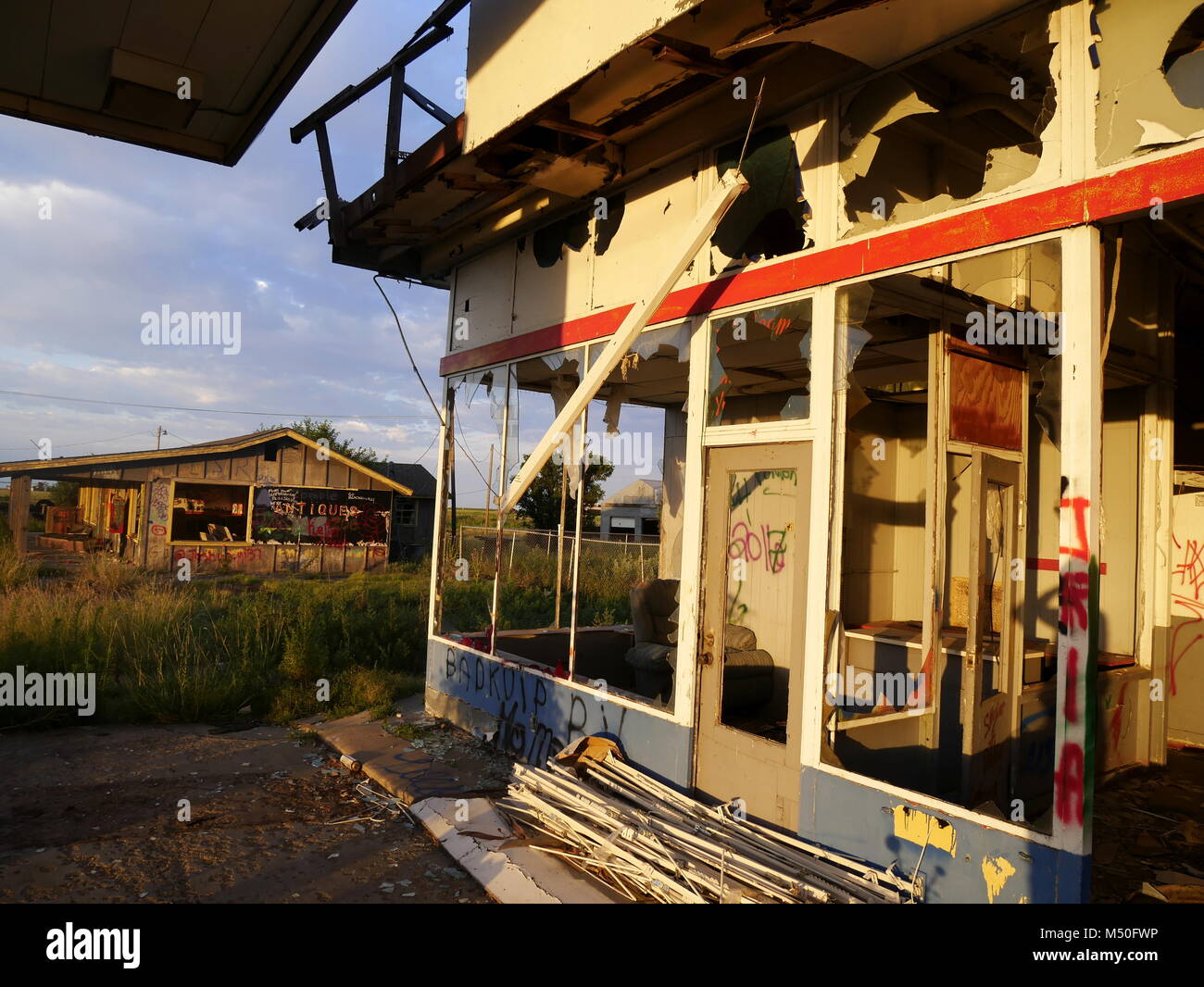
Where the Highway Whispers: Unearthing the Enduring Spirit of Conway, Texas
CONWAY, TEXAS – The Texas Panhandle unfurls like an ancient parchment under an immense, unblinking sky. Here, the horizon is a distant, unwavering line, and the wind, an omnipresent force, hums a low, ceaseless tune. It is a landscape that whispers of vastness, of resilience, and of time itself. Amidst this epic tableau, roughly 20 miles east of Amarillo, lies a testament to both fleeting glory and quiet endurance: the unincorporated community of Conway, Texas.

To the casual traveler hurtling down Interstate 40, Conway might register as little more than a highway sign, a cluster of a few weathered buildings, and perhaps a flash of a peculiar roadside attraction. It’s a place easily missed, a phantom on the modern map. Yet, beneath its unassuming veneer, Conway holds layers of history, a narrative woven from railroad ties, the rumble of iconic Route 66, and the stoic spirit of those who’ve called this windswept land home.
A Railroad’s Promise and a Judge’s Name
Conway’s origins are firmly rooted in the ambitious expansion of America’s rail network. In the early 20th century, as the Chicago, Rock Island and Gulf Railway pushed westward, carving a path across the Panhandle, a stop was established. This nascent community, founded around 1903, was named in honor of Judge R.B. Conway, a prominent figure in the area. Like many settlements of its era, Conway thrived as a crucial shipping point for local farmers and ranchers, a hub where the fruits of the land could begin their journey to distant markets.
“In those early days, the railroad was lifeblood,” explains Dr. Evelyn Reed, a historian specializing in Texas Panhandle communities. “Towns like Conway weren’t just places to live; they were essential nodes in a vast economic network. They were the bridge between isolated agricultural producers and the wider world.” By the 1920s, Conway boasted a general store, a blacksmith shop, a school, and a handful of homes – the typical trappings of a modest but vibrant rural community. The population hovered around 100 residents, a significant number for such an isolated spot.
The Mother Road’s Embrace: Conway’s Golden Age
The true inflection point in Conway’s history arrived with the designation of U.S. Route 66 in 1926. This legendary highway, stretching from Chicago to Santa Monica, became an artery of commerce, tourism, and dreams. It was the “Mother Road,” a symbol of American mobility and adventure, and Conway found itself directly on its path.
The advent of Route 66 transformed Conway from a purely agricultural rail stop into a quintessential roadside town. Gas stations, diners, and auto repair shops sprang up to cater to the endless stream of travelers – families migrating west, entrepreneurs seeking opportunity, and adventurers chasing the open road. “Route 66 breathed new life into places like Conway,” recounts Mark Jensen, a dedicated Route 66 preservationist and author. “It wasn’t just about getting from point A to point B; it was about the journey itself, and these small towns were vital parts of that experience. They offered a slice of authentic Americana.”
One can imagine the scene during the highway’s heyday: the hiss of tires on hot asphalt, the clatter of plates from a diner, the glow of neon signs cutting through the vast Texas night. Travelers would stop for a meal, fill their tanks, and perhaps exchange stories with locals before continuing their westward or eastward trek. Conway wasn’t just a place to pass through; it was a place to stop, rest, and connect.

The Dust Bowl and the Shadow of Progress
However, even during its Route 66 prime, Conway faced the harsh realities of its environment. The 1930s brought the devastating Dust Bowl, an ecological catastrophe that scoured the Panhandle and crippled its agricultural base. Many residents, their livelihoods ruined, were forced to abandon their homes and join the westward migration on Route 66, often passing through the very towns they once called home. Conway, like its neighbors, felt the sting of this profound environmental and economic crisis. Yet, it endured, thanks to the tenacity of its remaining residents and the continued flow of traffic on the Mother Road.
The most significant challenge to Conway’s existence, however, arrived in the latter half of the 20th century. The Interstate Highway System, envisioned in the 1950s, promised faster, more efficient travel. While beneficial for long-haul trucking and inter-city travel, it proved to be a death knell for many small towns like Conway. When Interstate 40 was completed in the 1970s, it effectively bypassed the heart of Conway, siphoning off the traffic that had sustained its businesses for decades. The neon signs flickered out, the diners closed their doors, and the gas pumps went dry.
“It was a slow, painful process,” recalls Elara Vance, a fictionalized but representative fifth-generation resident whose family has deep roots in the area. “One by one, the businesses closed. The sound of cars, which used to be constant, faded into a whisper. It felt like the world was moving on, and we were being left behind.” The population dwindled, and Conway began its long, quiet decline into what many now refer to as a “ghost town” – though not entirely devoid of life.
The Bug Ranch: A Modern Landmark
Despite the economic hardship and depopulation, Conway refuses to be completely forgotten. Its most famous, and perhaps quirkiest, modern landmark ensures that it remains a point of interest, particularly for those who cherish the spirit of Route 66: The Bug Ranch.
Just off I-40, a mere stone’s throw from the old Route 66 alignment, stand five Volkswagen Beetles, buried nose-down in the earth, mimicking the iconic Cadillac Ranch near Amarillo. Created in 1991 by the artist and entrepreneur Stanley Marsh 3 (who also commissioned Cadillac Ranch), the Bug Ranch is a whimsical, often spray-painted tribute to roadside art and the enduring legacy of the Mother Road. It serves as a popular, if slightly surreal, photo opportunity for travelers, drawing them off the interstate and, however briefly, into Conway’s orbit.
“The Bug Ranch is a brilliant piece of performance art,” says Jensen. “It’s a modern echo of the creative spirit that thrived along Route 66. It brings people here, and for a moment, they’re not just passing through; they’re engaging with the landscape and its history, even if it’s just for a selfie.” This playful monument, though a product of a later era, embodies the quirky, independent spirit that defined many of the attractions along America’s most famous highway.
The Enduring Spirit of the Panhandle
Beyond the Bug Ranch, Conway today is a scattering of homes, a few agricultural outbuildings, and the vast, unyielding landscape that surrounds it. The old Route 66 alignment, now a quiet service road, runs parallel to the bustling interstate, a silent sentinel to a bygone era. The air still smells of dry earth and prairie grass, and the wind still sings its ancient song.
The few residents who remain are often deeply connected to the land. Agriculture, primarily wheat and cotton farming, along with cattle ranching, continues to be the bedrock of the local economy. The vast plains are also increasingly dotted with modern wind turbines, silent giants that harness the very wind that has shaped this region for millennia, representing a new chapter in the Panhandle’s economic evolution.
“Life here is about resilience,” states Ben Carter, a fictionalized farmer whose family has worked the land near Conway for generations. “The land here demands respect. It’s not always easy, but there’s a quiet beauty to it, a sense of belonging that you won’t find just anywhere.” For people like Carter, Conway isn’t just a dot on the map; it’s home, a place where generations have toiled, endured, and found solace in the vastness.
Conway, Texas, is more than a near-ghost town or a curious roadside attraction. It is a living, breathing museum of American history – a microcosm of the rise and fall of countless small communities shaped by technological change and economic shifts. It stands as a powerful reminder of the ephemeral nature of progress and the enduring spirit of human settlement.
As the sun dips below the horizon, painting the sky in hues of orange and purple, the wind picks up, rustling through the dry grasses and whispering tales of old trains, roaring engines, and the countless dreams carried along the Mother Road. Conway, Texas, may no longer hum with the vibrant energy of its past, but its quiet resilience, its stark beauty, and its unique landmarks continue to tell a compelling story to those willing to listen to the whispers of the highway. It remains a poignant echo in the vast, beautiful silence of the Texas Panhandle.
.jpg?w=200&resize=200,135&ssl=1)

